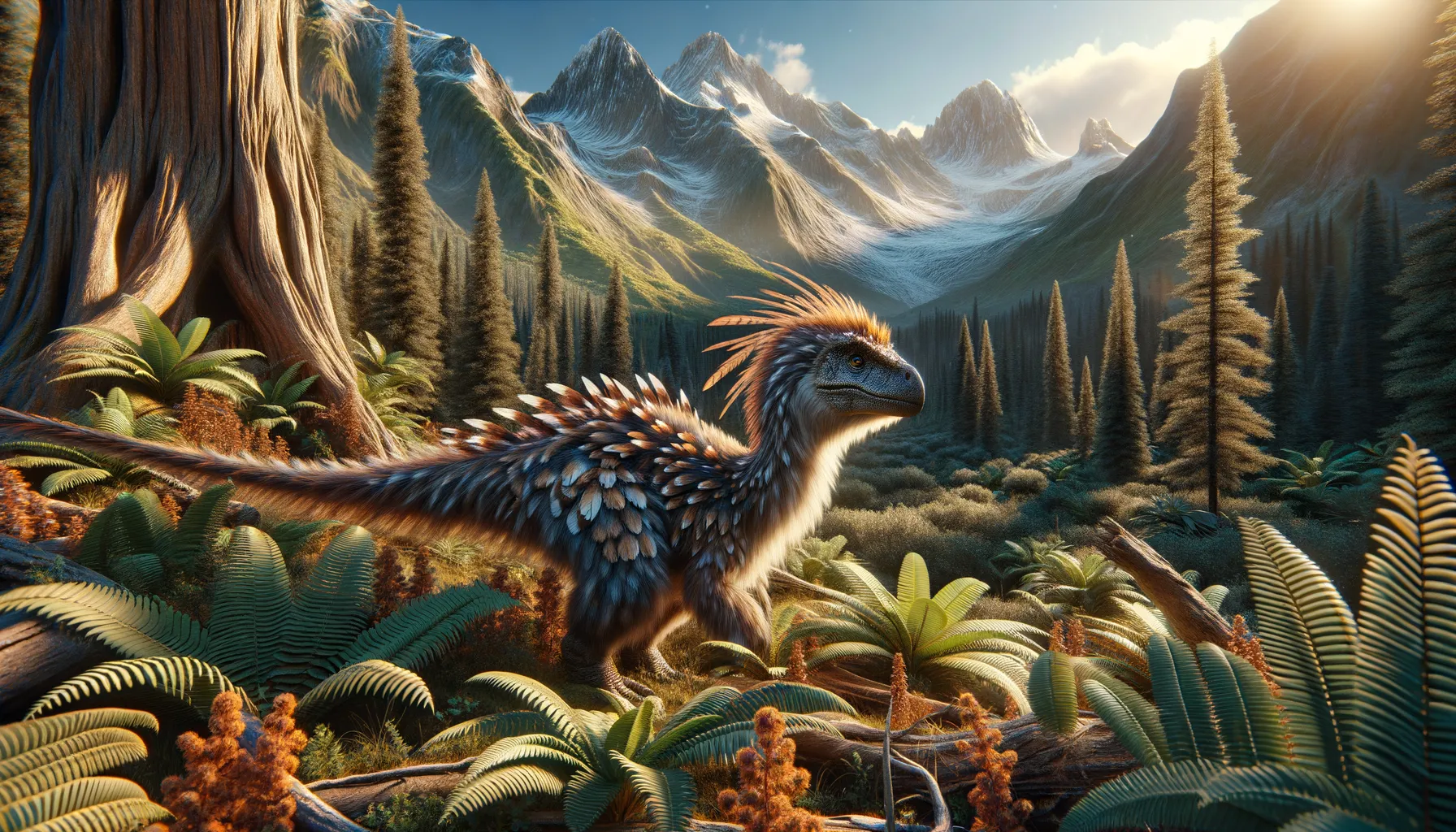
Xiaotingia
Small but crucial link in evolution's chain.
Period
Jurassic
Length
Measured about 60 centimeters in length.
Height
Approximately 20 to 30 centimeters tall.
Weight
Weighed approximately 800 to 1000 grams.
Xiaotingia was a small, feathered dinosaur that lived during the late Jurassic period in what is now China. It was closely related to both dinosaurs and birds, shedding light on the evolutionary transition between the two groups. Its discovery provided valuable insights into the characteristics that early avian species might have possessed.
Diet
Xiaotingia was likely an omnivore, feeding on small insects, plants, and possibly small vertebrates. Its diet would have been opportunistic, adapting to the availability of food in its environment.
Hunting
Hunting strategies included quick, agile movements to catch small prey. Xiaotingia might have used its claws and beak to grasp and consume small animals and insects efficiently.
Environmental challenges
Xiaotingia had to navigate a world filled with larger predators, finding ways to avoid becoming prey. Climate changes during the Jurassic could have affected its habitat, challenging its adaptability. Limited food resources might have required Xiaotingia to constantly search for sustenance, competing with other small fauna.
Speed
Capable of quick, agile movements.
Lifespan
Estimated to live around 10-15 years.
First discovery
Discovered in Liaoning, China, in 2011.
Fun Facts
- Xiaotingia was about the size of a modern chicken, making it a relatively small dinosaur compared to others from its time period.
- It lived during the Late Jurassic period, around 160 million years ago, in what is now China.
- Xiaotingia is considered an important link in the evolutionary chain between traditional dinosaurs and birds.
- This dinosaur had features like feathers and a wishbone, similar to modern birds, which has fascinated paleontologists studying the origin of birds.
- Xiaotingia was discovered in the Liaoning Province of China, a region well-known for yielding well-preserved feathered dinosaur fossils.
- The name 'Xiaotingia' honors Xiaoting Zheng, a professor known for his contributions to vertebrate paleontology.
- Despite its bird-like qualities, Xiaotingia had claws and teeth, which make it distinct from modern birds.
Growth and Development
Like many small dinosaurs, Xiaotingia likely grew rapidly to reach maturity, which could provide some protection from predators. Juveniles may have shared similar habitats with their parents, learning survival strategies. Over time, their feathers would develop, aiding in temperature regulation and possibly limited flight.
Habitat
Xiaotingia inhabited forested areas with dense vegetation, providing both food and cover from predators. These environments were warm and humid, with abundant flora that supported a diverse ecosystem. Proximity to water sources such as rivers could have been crucial for its survival and that of its prey.
Interaction with other species
Xiaotingia likely shared its habitat with other small theropods, which could lead to competition for resources. Its presence in a diverse ecosystem meant interactions with various plant life and insects. Larger predators in the area posed constant threats, shaping its behavior and survival tactics.
Natural lifespan
Xiaotingia's natural lifespan did not extend much beyond 15 years.
Reproduction
Xiaotingia likely laid eggs, with nests hidden in dense vegetation. Its reproductive strategy would have focused on producing multiple offspring to ensure some survived to adulthood. Parental care could have included guarding nests and teaching fledglings basic survival skills.
Social behaviour
Xiaotingia may have been solitary or lived in small groups, maximizing resource access. Cooperative behaviors could have included group foraging and shared vigilance against predators. Interaction among individuals might have included limited vocal communication, using calls to signal danger or maintain group cohesion.
Fossil locations
Fossils of Xiaotingia have primarily been discovered in Liaoning Province in northeastern China. The region is known for its well-preserved fossil beds from the Jurassic, providing critical data for paleontology. The discovery of Xiaotingia contributed significant knowledge about early feathered dinosaurs and their evolutionary ties to birds.
